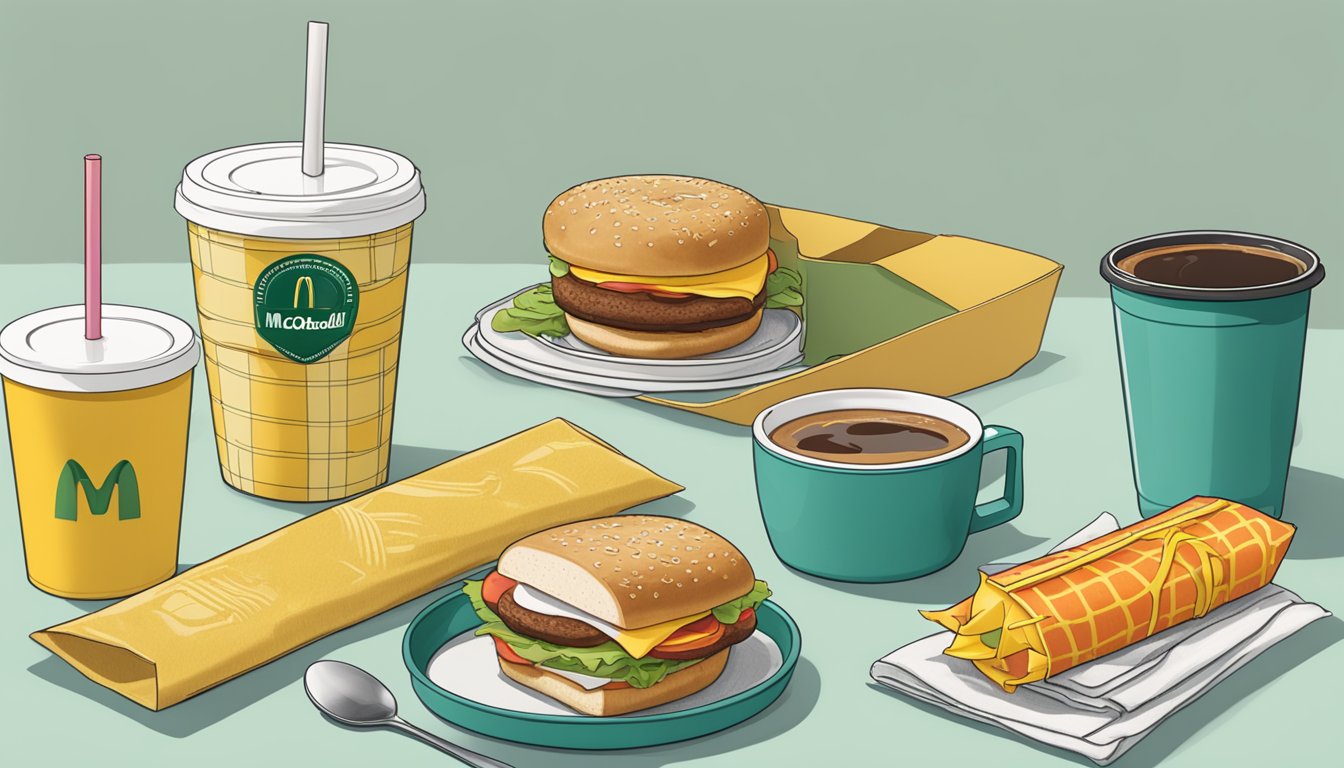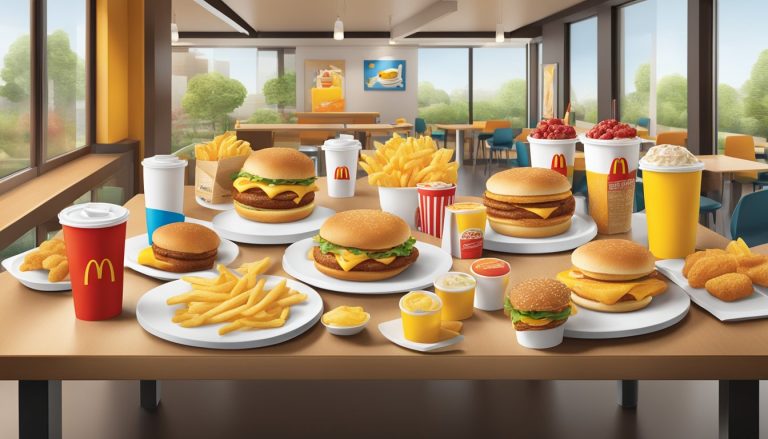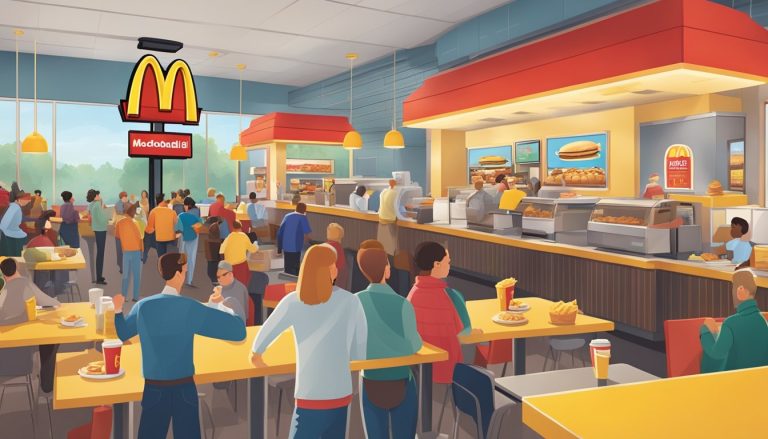McDonald’s breakfast remains a popular choice for many, offering convenience and tasty options to start the day. However, with growing environmental concerns, customers are seeking ways to reduce their ecological impact even when dining out. This article explores practical strategies for making McDonald’s breakfast orders more eco-friendly.
By implementing simple changes in ordering and consumption habits, patrons can significantly decrease waste and minimize their carbon footprint while enjoying their favorite morning meals. From choosing reusable containers to opting for plant-based alternatives, these tips aim to help environmentally conscious consumers align their breakfast choices with their values. The following suggestions provide actionable steps for those looking to make a positive difference during their McDonald’s visits.
1) Bring a reusable coffee cup

Carrying a reusable coffee cup to McDonald’s is a simple yet effective way to reduce waste. Many locations will gladly fill a personal cup with coffee or other beverages.
This small change can significantly decrease the number of disposable cups ending up in landfills. Reusable cups are often insulated, keeping drinks at the desired temperature for longer.
Some McDonald’s restaurants may even offer a small discount for customers who bring their own cups. This incentive encourages eco-friendly practices while saving money.
Choosing a durable, high-quality reusable cup ensures it will last for many uses. Stainless steel or glass options are popular choices that are easy to clean and maintain.
Remember to clean the cup thoroughly between uses to maintain hygiene standards. Bringing a reusable cup not only reduces waste but also sets a positive example for other customers.
2) Opt for the veggie wrap

McDonald’s offers a vegetarian-friendly option with their veggie wrap. This menu item provides a more sustainable choice compared to meat-based breakfast options.
The veggie wrap typically includes fresh vegetables like tomatoes, cucumbers, and lettuce. Some versions may also feature feta cheese for added flavor. These plant-based ingredients generally have a lower environmental impact than animal products.
Choosing a veggie wrap can help reduce your carbon footprint. Plant-based foods often require fewer resources to produce and generate fewer greenhouse gas emissions compared to meat products.
The whole wheat tortilla used in some veggie wraps adds nutritional value and fiber. This makes it a filling breakfast option that can keep you satisfied throughout the morning.
By selecting a veggie wrap, customers support the demand for more plant-based options on fast food menus. This encourages restaurants to expand their vegetarian offerings, potentially leading to more sustainable choices in the future.
3) Request no single-use cutlery

When ordering breakfast at McDonald’s, ask for no plastic utensils if you don’t need them. Single-use plastic cutlery contributes significantly to waste and environmental pollution.
Many customers automatically receive plastic forks or spoons with their order, even if they plan to eat at home using their own utensils. By specifically requesting no cutlery, you can help reduce unnecessary plastic waste.
For those dining in, consider using the restaurant’s reusable cutlery options if available. If you frequently eat on-the-go, keep a set of reusable utensils in your bag or car for easy access.
Some McDonald’s locations have started offering cutlery only upon request. Supporting and encouraging this practice can lead to widespread adoption, further reducing plastic waste across the fast food industry.
By declining single-use plastic cutlery, you’re taking a small but impactful step towards more sustainable dining habits. This simple action can inspire others and contribute to larger-scale environmental efforts.
4) Choose the oatmeal option

McDonald’s Fruit & Maple Oatmeal is a more eco-friendly breakfast choice compared to many other menu items. Oats require fewer resources to produce than animal-based products, making them a more sustainable option.
The oatmeal comes with diced apples and a cranberry-raisin blend, adding nutritional value and flavor without significantly increasing its environmental impact. These fruit additions also support a more plant-based meal choice.
To make this option even more eco-friendly, customers can request their oatmeal without cream. This small change reduces the dairy content, further decreasing the meal’s carbon footprint.
For those watching their sugar intake, asking for the oatmeal without brown sugar is an option. This modification not only makes the meal healthier but also reduces unnecessary added ingredients.
When ordering oatmeal, consider bringing your own reusable spoon to minimize single-use plastic waste. This simple action can contribute to reducing the overall environmental impact of your McDonald’s breakfast experience.
5) Bring your own straw

Plastic straws contribute significantly to environmental pollution. By bringing a reusable straw to McDonald’s, customers can reduce their single-use plastic consumption.
Many eco-friendly alternatives exist, including stainless steel, glass, bamboo, and silicone straws. These options are durable, washable, and can be used repeatedly.
Reusable straws come in various sizes suitable for different beverages. Some even collapse or fold for easy transport in a pocket or purse.
When ordering a drink at McDonald’s, customers can politely request no straw and use their own instead. This small action can make a difference in reducing plastic waste.
For those who prefer drinking directly from the cup, simply declining a straw altogether is another eco-friendly choice. Many beverages can be enjoyed without straws.
By consistently bringing a reusable straw or forgoing straws entirely, individuals can significantly decrease their plastic footprint over time.
6) Pack a reusable napkin

Bringing a reusable napkin to McDonald’s can significantly reduce paper waste. Cloth napkins are durable, washable, and can be used multiple times.
Many eco-friendly options are available, including cotton, linen, or bamboo napkins. These materials are soft, absorbent, and gentle on the skin.
Reusable napkins come in various sizes and designs. Choose one that fits comfortably in a pocket or bag for easy transport.
Using a cloth napkin eliminates the need for disposable paper napkins. This small change can have a big impact over time.
After use, simply fold the napkin and take it home for washing. Most cloth napkins are machine washable for convenience.
Some people keep a set of reusable napkins in their car or office for impromptu meals out. This ensures they always have an eco-friendly option on hand.
Adopting reusable napkins not only reduces waste but also adds a personal touch to meals. It’s a simple yet effective way to make McDonald’s visits more environmentally friendly.
7) Order the egg white delight
The Egg White Delight was a popular breakfast option at McDonald’s for health-conscious customers. This sandwich featured a fluffy egg white patty, Canadian bacon, and white cheddar on a toasted English muffin.
Choosing egg whites over whole eggs can be a more sustainable choice. Egg whites generally have a lower environmental impact than whole eggs, as they require fewer resources to produce.
Unfortunately, McDonald’s has discontinued the Egg White Delight in many locations. However, customers can still request egg whites in their breakfast sandwiches at most McDonald’s restaurants.
Opting for egg whites in your breakfast sandwich not only reduces calorie intake but also supports more eco-friendly eating habits. This simple swap can make a small but meaningful difference in reducing the environmental footprint of your McDonald’s breakfast order.
When egg white options are available, choosing them aligns with both health-conscious and environmentally-conscious dining preferences. It’s a small step towards more sustainable fast food consumption.
8) Avoid plastic lids

Plastic lids on McDonald’s breakfast drinks contribute significantly to single-use plastic waste. These lids are often not recyclable and end up in landfills or polluting the environment.
Customers can make a positive impact by requesting their hot beverages without lids. This simple action reduces plastic consumption and helps minimize environmental harm.
For those concerned about spills, bringing a reusable travel mug is an excellent alternative. Many McDonald’s locations allow customers to use their own cups for beverages.
If a lid is necessary, patrons can ask if paper lids are available. Some McDonald’s restaurants have begun offering more eco-friendly lid options for their hot drinks.
By avoiding plastic lids, customers send a message to McDonald’s about the importance of sustainable packaging. This collective action can encourage the company to explore and implement more environmentally friendly alternatives.
9) Share large orders to reduce waste

Sharing large breakfast orders at McDonald’s can significantly reduce waste. When dining with friends or family, consider ordering larger portions or combo meals to split among the group.
This approach minimizes packaging waste from individual items. It also helps reduce food waste, as people can take only what they plan to eat.
Sharing meals allows customers to try a variety of menu items without overordering. This can be especially useful for those who want to sample different breakfast options without committing to full-sized portions.
McDonald’s offers several breakfast platters and family meal deals that are ideal for sharing. These options often come in more efficient packaging compared to multiple individual orders.
By sharing meals, customers can also save money while reducing their environmental impact. This practice aligns with McDonald’s efforts to minimize waste and promote more sustainable dining habits.
Understanding the Environmental Impact of Fast Food
Fast food consumption has significant environmental consequences. The industry’s rapid production and distribution methods contribute to increased carbon emissions and resource depletion.
Packaging waste is a major concern. Single-use plastics and paper products from fast food meals often end up in landfills or pollute natural ecosystems.
Energy usage in fast food restaurants is substantial. High-powered cooking equipment and constant refrigeration consume large amounts of electricity, often from non-renewable sources.
Water consumption in fast food production is another key issue. Growing ingredients, processing foods, and cleaning facilities all require substantial water resources.
Transportation of ingredients and finished products adds to the carbon footprint. Long-distance shipping and frequent deliveries increase greenhouse gas emissions.
Food waste is prevalent in the fast food industry. Overproduction and strict quality control measures result in discarded food that could have been consumed or composted.
Animal agriculture, a cornerstone of many fast food menus, has notable environmental impacts. It contributes to deforestation, water pollution, and methane emissions.
Some fast food chains are taking steps to address these issues. Initiatives include sourcing sustainable ingredients, reducing packaging, and improving energy efficiency in restaurants.
Choosing Sustainable Packaging
McDonald’s is taking steps to make its packaging more environmentally friendly. The company aims to source all guest packaging from renewable, recycled, or certified sources by 2025. This initiative will help reduce waste and support a circular economy.
Opting for Recyclable Materials
McDonald’s has redesigned several packaging items to be more sustainable. The iconic red fry boxes are now made from renewable materials. Egg McMuffin wrappers use recycled content. Customers can choose paper straws instead of plastic ones in many locations.
The company is exploring alternative materials to further reduce its environmental impact. Plant-based plastics and fiber-based packaging are being tested as potential options.
To support these efforts, customers can:
- Request no straw or lid when ordering drinks
- Bring reusable cups for coffee or soft drinks
- Choose menu items with minimal packaging
- Properly sort waste into recycling bins provided
By making conscious choices, customers can contribute to McDonald’s sustainability goals and help minimize packaging waste from their breakfast orders.
Incorporating Plant-Based Choices
McDonald’s has expanded its plant-based options in recent years. The McPlant burger, developed with Beyond Meat, offers a vegan alternative to traditional beef patties.
For breakfast, consider customizing existing menu items. Request an English muffin with jam or peanut butter instead of egg and cheese. This simple swap creates a tasty plant-based morning meal.
Apple slices are another vegan-friendly option available at most McDonald’s locations. They provide a fresh, healthy start to the day.
Oatmeal can be ordered without cream for a hearty plant-based breakfast. Ask for it to be made with water instead of milk.
Some locations offer soy or plant-based milk alternatives for coffee drinks. This allows customers to enjoy lattes and cappuccinos without dairy.
By choosing these plant-based options, customers can reduce their environmental impact. Plant-based foods generally have a lower carbon footprint than animal products.
Encouraging friends and family to try plant-based choices can amplify the positive effect. Every small change adds up to make a difference for the planet.




